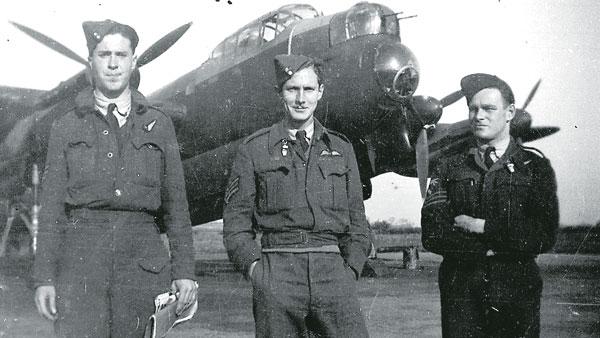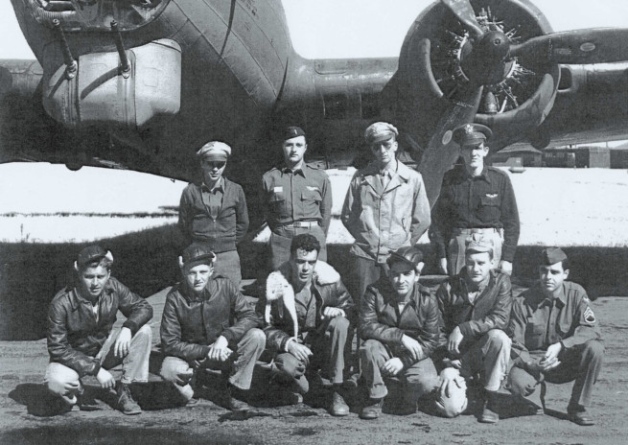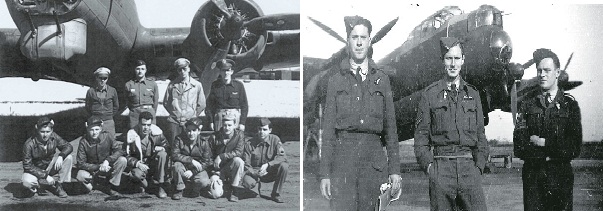
A service marking the 70th year anniversary of a Lancaster bomber’s crash, a remarkable WWII plane, during the height of the war was done last December 21, 2013 on its crash site at Welland Gliding Club led by Reverend Graham Bell.
Paul Knight, who spearheaded the putting up of the WWII plane’s memorial some 15 years ago, was also there to give a reading along with Reg Payne who himself was a WWII serviceman as well as the other individuals who paid homage to the three young lives the craft’s crash abruptly ended.
The said WWII plane saw a number of war actions – numerous bombing raids over Germany and a collision with another Lancaster over Germany a month before it crashed which ended with the plane having severe nose damage.
Pilot Officer Bill Baker was the one who nursed the plane back to Britain which had him suffering from extreme frostbite resulting from the cold air that rushed into the plane through the holes its body sustained. After landing, Baker, who was a recipient of a Distinguished Flying Cross, never went on air again.
Two RAF servicemen and one from the Royal Australian Air Force died when the WWII plane met its end near Brigstock on December 22, 1943 – Sergeant George Clark O’Niell, 19, and Sergeant Thomas Higgins, 20, who both hailed from Scotland and RAAF Flight Sergeant Cecil Ernest Ryall, 20, who was a Bondi, New South Wales native.
There were other men aboard the said WWII plane, which took off from RAF Spilsby in Lincolnshire, but they were able to get out of it before it blew off.
Separate Plane Crash

On the other hand, another WWII plane crash which almost wiped out an entire village near Corby marked its 70th anniversary last December 5, 2013.
December 5, 1943 saw the demise of an American B17 Flying Fortress in Deenethorpe.
The Northamptonshire Evening Telegraph reported the day after the crash happened that the said village had “escaped obliteration on Sunday morning by nothing short of a miracle”.
The story went on to recount that after the WWII plane crashed, the airmen aboard it – still in their conscious state – rushed out and had the villagers clear out the area before the aircraft blew off.
The Telegraph’s report went on to say:
“Out into the fields they [residents] hurried, some to lie flat, some to shelter behind haystacks and others to crouch fearfully, behind mangold clamps.
There they waited, breathless, gazing with apprehension at the clustered village homes in which they had lived for many years.
Slowly the minutes passed and at the end of about 10 – BOOMPH! – the bomb-load was detonated by the heat from the flames enveloping the burning machine.”
A calf was the only thing killed from the explosion that ensued after the crash. A service was immediately held the following week as a show of gratitude that nobody was hurt or killed when the said WWII plane crashed and exploded.
Paul Knight can also attest to the aftermath of the B17’s crash; he was a 14-year-old lad at that time and decided to hop on to his bicycle to check out the crash site after the explosion.
He even became friends with flight’s radio operator, Staff Sergeant Benjamin Musser, who later spent a holiday with him in Arizona.
According to him, the crash and explosion happened on a Sunday at about 9 AM. he was about to get his parents a cup of tea before they go on to their shop when it happened, its tremors sending the things on the shelf in Knight’s home dancing for a few seconds.
Even when his parents told him not to go check the site out, he bicycled his way there and near Deenethorpe, he saw smoke rising with most of the buildings damaged.
Paul Knight said a policeman stopped him when he came nearer to the village.
“To my astonishment he said the crew all got out. I told him I wanted to go to Upper Benefield [as an excuse] and he said ‘OK, but you are not to touch any of the wreckage’. A lot of crashes happened in the area during the war,” he recalled.
When he got in touch with Musser, the latter told him what happened to the WWII plane which led to its fall.
“They were taking off as normal. Then the wing tip dug into the runway. They knew they were in trouble. It crashed into an empty cottage, came to a halt and caught fire. The two men in the front were trapped but the others got out. The rest of the crew told villagers to get out of their houses because it would most certainly blow,” Mr. Knight recounted the story the flight operator told him.
The said WWII plane was carrying 2,000 gallons of fuel and 6,000 pounds of bombs that time that was why the breadth of its explosion was wide even reaching places as far as Kettering.
He added that the surviving airmen’s warnings really helped save the villagers’ lives.
“There was nobody injured. It was incredible really. It was so close to the center [of the village] it’s a wonder anyone got out. It was quite frightening for everyone living around here.”
